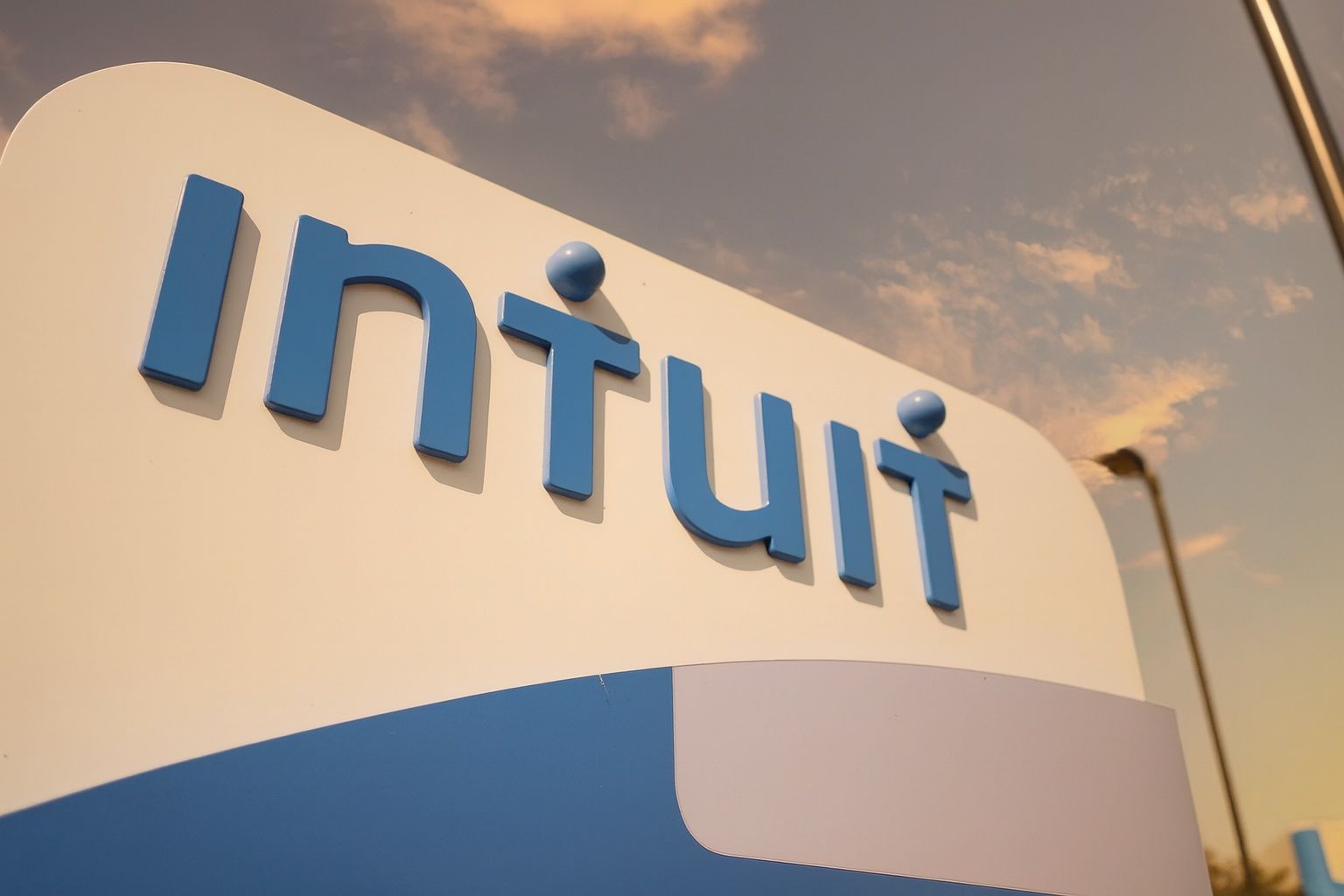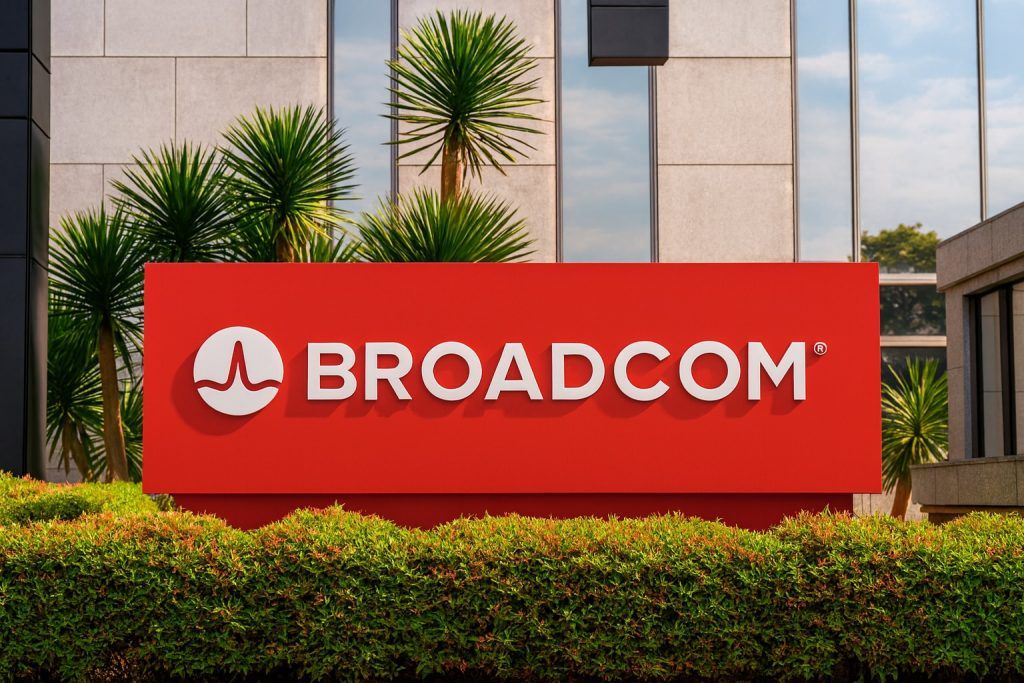Intuit Stock Rally: 3% Weekly Gain as Earnings Beat and AI Push Spark Optimism – What’s Next for INTU?
- Weekly Jump: Intuit Inc. (NASDAQ: INTU) stock closed around $661 per share as of Friday, October 17, 2025, marking roughly a 3.1% rise over the past week [1]. Despite the uptick, the price remains about 19% below its 52-week high of $813.70 [2], reflecting earlier post-earnings volatility.
- Strong Earnings & Growth: The company’s latest quarterly results (FY2025 Q4) beat expectations, with revenue jumping 20% year-over-year to $3.83 billion (vs. $3.75B expected) and adjusted EPS of $2.75 (vs. $2.66 expected) [3]. Intuit’s CEO credited artificial intelligence initiatives for boosting performance, highlighting a “virtual team of AI agents and AI-enabled human experts” driving gains [4].
- Buybacks and Dividends: Underscoring confidence, Intuit announced a new $3.2 billion share buyback authorization (bringing total repurchases to $5.3B) [5] and approved a 15% quarterly dividend hike to $1.20 per share (annual yield ~0.7%) [6] [7]. The higher dividend was paid out on Oct. 17, 2025, rewarding shareholders and reflecting the company’s robust cash generation.
- Cautious Outlook: Management issued conservative guidance for the upcoming fiscal year. Intuit forecasts first-quarter revenue growth of ~14–15%, slightly below Wall Street’s ~16% estimate [8]. The tempered outlook stems partly from weakness in its Mailchimp marketing platform, which saw a slight revenue decline and is a “near-term drag” on growth according to the CFO [9]. This cautious forecast initially sent INTU shares lower in late August.
- Analyst Sentiment: Wall Street remains broadly bullish on Intuit. The stock carries a “Moderate Buy” consensus rating, with 21 out of 27 analysts rating it a Buy or Strong Buy [10]. The average 12-month price target is about $792, implying significant upside from current levels [11]. Notably, Oppenheimer recently boosted its target to $868 with an Outperform rating [12], citing Intuit’s strong fundamentals, while some others trimmed targets post-guidance (e.g. UBS to $725, Neutral) [13].
- Strategic Moves & Sector Standing: Intuit continues to dominate the tax and small-business software arena through products like TurboTax, QuickBooks, Credit Karma, and Mailchimp. The company is aggressively integrating AI – from QuickBooks “AI agents” that automate accounting tasks [14] to a new GenOS AI platform – to drive future growth. Compared to many fintech peers, Intuit’s recurring-revenue model has shown resilience [15]. However, it faces competition (e.g. startups in bookkeeping, rival tax prep services) and watches regulatory developments closely – a recent decision in Washington to halt the IRS’s free “Direct File” program was seen as removing a potential long-term threat to TurboTax [16].
Stock Surges After a Shaky Stretch
Intuit’s stock staged a healthy rebound heading into October 19, 2025, gaining roughly 3% over the week and trading around $661 per share [17]. This marks a turnaround from late summer, when shares slipped in the wake of cautious guidance. Even after this week’s pop, INTU remains well off its all-time highs (52-week high of ~$814 [18]), but the recent momentum reflects renewed investor optimism. By comparison, the stock is up about 6–9% year-to-date in 2025, outpacing some fintech peers that have struggled, and has notched an 8.6% gain over the past year [19]. For longer-term holders, Intuit’s trajectory is impressive – shares have more than doubled in the last three years and climbed 104% over five years, a testament to the company’s powerful brand and subscription-based ecosystem [20].
This week’s lift comes amid a broader tech uptick and favorable sentiment toward companies with dependable recurring revenue. Intuit’s core offerings – tax software, small-business accounting, and personal finance tools – generate steady income and high customer retention, traits that investors prize in uncertain markets. “Recent surges in tech stocks and shifts in how investors value steady recurring revenues like Intuit’s have played a part,” noted a Simply Wall St analysis, pointing to the market’s reward for Intuit’s resilient model [21]. Indeed, Intuit’s 50-day moving average around $675 remains above the current price, suggesting the stock is still climbing out of a mild slump [22]. Its two-hundred-day average near $695 indicates the stock has room to run if confidence builds further [23].
Market volatility persists – Intuit saw a 0.2% dip over the past month [24] – but the recent uptrend suggests traders may be viewing the post-earnings pullback as overdone. At a market capitalization of about $184 billion [25], Intuit sits among the top-tier software companies. It currently trades at roughly 48 times earnings, a premium to the average software industry P/E (~35x) but below some high-growth fintech names [26]. This valuation reflects Intuit’s blend of steady growth and profitability; with a beta of 1.25 [27], the stock tends to move slightly more than the market, underscoring that sentiment shifts – whether due to earnings news or macroeconomic factors – can still swing INTU shares notably in the short term.
Earnings Beat Sparks Confidence
Investor confidence got a boost from Intuit’s most recent earnings report, which delivered a solid beat on both top and bottom lines. For the fourth quarter of fiscal 2025 (ended July 31), Intuit reported revenue of $3.83 billion, up 20.3% year-over-year and ahead of analyst expectations (~$3.75B) [28]. Adjusted earnings of $2.75 per share also exceeded forecasts ($2.66) [29], capping off a fiscal year of double-digit growth. These strong results highlight robust demand across Intuit’s business units despite a choppy economy. CEO Sasan Goodarzi credited advances in artificial intelligence for boosting performance, noting the company’s use of a “virtual team of AI agents and AI-enabled human experts” to drive customer success [30]. In fact, Intuit disclosed that its “Global Business Solutions” segment (which includes QuickBooks and Mailchimp) grew 18% in Q4, or 21% excluding Mailchimp’s drag [31]. Its Online Ecosystem revenue (primarily cloud services) jumped 21% (26% ex-Mailchimp) [32].
TurboTax, the crown-jewel tax software, had a more mixed showing: the number of U.S. tax filings processed dipped 2% to 39.2 million, and average revenue per return slipped as Intuit “yielded share” on lower-end customers [33]. However, these slight declines were anticipated after an unusually strong prior tax season. Meanwhile, Intuit’s other flagship, QuickBooks, continues to benefit from the migration of small businesses to cloud accounting. The company has largely completed the shift from QuickBooks Desktop to subscription-based QuickBooks Online, even closing the pricing gap between the two versions [34]. This transition boosts recurring revenue, though it naturally slowed legacy desktop sales. To further monetize its user base, Intuit implemented price increases for QuickBooks Online and Payroll subscriptions in late summer alongside the rollout of new AI features [35]. Encouragingly, customer attrition remained below expectations despite the higher fees – “Every time we do a price change, we realize that we were too conservative,” observed CFO Sandeep Aujla, noting churn was lower than forecast [36]. This suggests Intuit enjoys significant pricing power thanks to its product’s value for businesses.
The earnings beat and operational highlights (20% revenue growth and successful price hikes) underscored Intuit’s ability to “overdeliver,” as one Seeking Alpha analyst put it [37]. The company’s track record of expanding sales at a double-digit pace – fueled by acquisitions like Credit Karma (2020) and Mailchimp (2021), and by organic innovations – reinforces its image as a fintech leader that can execute. It’s worth noting that Intuit’s operating margins have been healthy (FY2025 net margin ~20.5%, ROE ~22.7% [38]), giving it room to invest in new technology (AI, automation) while still returning cash to shareholders through buybacks and dividends. In late August, the Board’s decision to approve a $1.20 quarterly dividend (up from $1.04) [39] [40] marked the 12th consecutive year of dividend increases, and the new stock repurchase program adds to the $2.1B remaining from prior authorizations [41]. These moves signal that management sees long-term value in Intuit’s stock and has confidence in sustained cash flow growth.
Guidance: Growth Plans Meet Investor Skepticism
Despite the strong finish to FY2025, Intuit surprised some investors with a cautious outlook for the coming year. On August 21, alongside earnings, the company issued guidance for fiscal 2026 that was lukewarm relative to bullish expectations. For the first quarter of FY2026 (Aug–Oct 2025), Intuit projected revenue growth of 14%–15%, which fell short of analysts’ consensus (~16.1%) [42]. It also guided Q1 adjusted EPS of $3.05–$3.12, essentially in line with estimates ($3.07) [43]. The full-year FY2026 revenue forecast of $20.99–$21.19 billion represents about 12–13% annual growth – solid double digits, but not much above the $21.12B consensus [44] [45]. In other words, Intuit expects continued expansion at a healthy clip, but not an acceleration beyond what the market already anticipated.
This conservative stance is largely due to headwinds in the Mailchimp unit, as company officials openly acknowledged. Mailchimp, the email marketing platform Intuit bought for ~$12 billion in 2021, has struggled to meet growth targets. It actually saw a slight decline in revenue in Q4 [46], and user retention has been challenging. “Mailchimp is a near-term drag on growth,” CFO Aujla told Reuters, though he emphasized initiatives are underway to improve the product’s usability and performance by year-end [47]. Small business customers, he noted, found parts of Mailchimp “a bit harder to use,” which hurt retention and expansion within the client base [48]. Intuit is working to streamline the interface and better integrate Mailchimp with QuickBooks to deliver more value. The company expects Mailchimp’s growth to normalize by the end of FY2026, but in the meantime it’s tamping down overall revenue guidance. Excluding Mailchimp, Intuit’s core QuickBooks Online ecosystem and small-business services are growing in the mid-20% range [49], so the underlying business remains strong.
Another factor in the modest outlook is the waning benefit of price increases. Intuit enjoyed a boost in FY2025 from raising prices (particularly in its desktop software and some online subscriptions). In FY2026, those contributions annualize, and management warned that year-over-year growth will rely more on new customer acquisition and volume gains rather than further price hikes [50] [51]. Essentially, after a year of aggressive monetization (including the fall 2025 QuickBooks price bump), the company is guiding prudently in case higher fees slightly dampen new user growth or if macroeconomic factors (like small business formation rates) soften. Additionally, Intuit’s tax segment faces a known challenge: TurboTax saw a dip in average revenue per return as it competes to retain filers who might otherwise use free or cheaper alternatives [52]. The company sacrificed a bit of pricing on lower-value customers (“lower ARPR customers”) to maintain share in a flat tax-filing market [53], and that trend could continue.
Investors reacted swiftly to the guidance. Intuit’s stock tumbled about 6–7% in after-hours and next-day trading following the August forecast release [54] [55]. Over the subsequent weeks, the sell-off deepened, with INTU at one point down roughly 15–20% from its summer highs. This pullback reflected disappointment that one of the fintech/software sector’s star performers might be entering a slower growth phase. It also coincided with broader market jitters in September. By mid-October, however, the stock stabilized and began clawing back losses – aided by the broader tech rally and perhaps a realization that Intuit’s guidance, while cautious, is not actually weak. In fact, the FY2026 projections were “largely in line” with consensus on full-year revenue (~$21B, ~12% growth) and EPS (~$23) [56] [57]. The main shortfall was in Q1’s topline, a single quarter that could prove conservative if Mailchimp picks up steam faster. Intuit’s management has a history of setting achievable targets (and often beating them), so some analysts saw the guidance as a classic under-promise, especially given the company’s confident moves like the big buyback.
Wall Street’s Take: Mostly Bullish, Some Caution
Financial analysts largely remain upbeat about Intuit’s prospects, even after the guidance-induced dip. According to MarketBeat data, the consensus rating on INTU is a “Moderate Buy,” with 1 analyst rating it Strong Buy, 21 Buy, 4 Hold, and only 1 Sell [58]. The average price target sits around $792, about 20% above the current stock price [59]. In other words, analysts on balance see double-digit upside ahead for Intuit over the next 12 months.
Several firms have reiterated or adjusted their targets in light of recent developments. Notably, Oppenheimer raised its price target from $742 to $868 (one of the highest on the Street) in late July and maintained an Outperform rating [60], expressing confidence in Intuit’s long-term growth trajectory, including its expanding ecosystem and AI-driven innovations. On the flip side, some analysts trimmed expectations after the August guidance: for example, UBS cut its target from $750 to $725 (Neutral stance) on August 22 [61], and Redburn (Rothschild & Co.) nudged its target up to $670 but only to a Neutral rating as of late September [62] – suggesting those firms see Intuit as fairly valued in the mid-$600s near-term. Zacks Investment Research also downgraded the stock from a “Strong Buy” to Hold shortly after the guidance miss [63]. These mixed adjustments underline a key point: while the majority of analysts are bullish, there is recognition that Intuit’s valuation already reflects a lot of its strength, and any stumble (like slower Mailchimp improvement or macro hiccups) could limit near-term upside.
On the positive side, Intuit continues to win endorsements for its strategic direction. Weiss Ratings reissued a “buy (B-)” rating in early October [64]. Many analysts highlight Intuit’s expanding total addressable market – moving beyond tax prep into personal finance (Credit Karma) and digital marketing (Mailchimp) – and its track record of successfully monetizing its user base. The integration of generative AI throughout Intuit’s product lineup is a fresh catalyst that could boost productivity for customers and drive new revenue streams (e.g., premium AI features). Morgan Stanley and Bank of America (not cited directly here, but as reported on financial newswires) have lauded Intuit’s AI strategy and customer retention metrics, arguing these support a premium valuation. Moreover, Intuit’s financial health draws praise: the firm carries relatively low debt (debt-to-equity ~0.30 [65]), strong cash flows, and a history of ROI-enhancing buybacks – a combination that gives investors a buffer in tougher times.
Institutional investors also appear to be showing confidence. Recent regulatory filings revealed that hedge funds and asset managers increased their stakes in Intuit over the last quarter. For instance, Arcus Capital Partners purchased 1,190 shares (≈$937,000 worth) in Q2 [66] [67], a small position but symbolic of growing institutional interest. Other firms like Dogwood Wealth and CBIZ Investment Advisory dramatically boosted their holdings (in percentage terms) during 2025 [68]. In total, over 83% of Intuit’s stock is owned by institutions [69] – a sign that large investors see it as a core long-term holding in the tech portfolio. While insider selling occurred (several executives exercised options and sold stock in recent months, which isn’t unusual for a company of this size [70] [71]), there’s no indication of any insider exodus or red flags; management still holds significant equity, aligning their incentives with shareholders.
From a quantitative angle, fundamental screens and models paint Intuit as a solid, if not screaming, buy. A factor-based analysis by Validea (highlighted on TS2.tech) gave Intuit a 77% score on a growth-oriented stock model – one of the higher ratings among large-cap software peers [72]. This model (based on Professor Partha Mohanram’s research) favors companies with low book-to-market ratios and strong, sustained profitability. Intuit passed many of the model’s checks (high return on assets, strong cash flow relative to assets, revenue stability), but scored lower on R&D and capital expenditure intensity [73]. A 77% score indicates moderate interest from a growth-investor perspective – not the absolute top of the class, but well above numerous other tech stocks [74]. It aligns with the notion that Intuit offers a blend of growth and stability, rather than high-flying momentum. Additionally, a discounted cash flow (DCF) analysis by Simply Wall St suggests Intuit’s intrinsic value is around $735 per share, which is roughly 10% above the recent market price – implying the stock is modestly undervalued on a fundamentals basis [75]. This DCF incorporates analyst forecasts of rising free cash flow (projected to reach ~$11.7B by 2030) and finds Intuit trading at a fair discount to those future cash streams [76] [77].
Fintech and Software Sector Snapshot
Intuit’s performance comes amid a mixed backdrop for the broader fintech and software sector. In 2025, many fintech players have faced headwinds: for example, digital payment giant PayPal has seen its stock underperform, and upstarts in areas like buy-now-pay-later or crypto have struggled with profitability. By contrast, Intuit’s focus on mission-critical financial software for consumers and small businesses has provided a degree of stability. Its closest analogs are perhaps companies like Adobe or Salesforce – established software firms that, like Intuit, command high market share in their niches and generate dependable subscription revenue. Intuit’s 11% forecasted annual revenue growth for the next few years [78] [79] is slightly slower than the broader software industry’s ~19% average (which is skewed by smaller high-growth firms) [80] [81]. This underscores that Intuit is a more mature business now; it might not grow as explosively as some younger cloud software companies, but it also carries lower execution risk.
Against direct competitors, Intuit largely sets the pace. Rival H&R Block, which focuses on tax preparation, operates on a different cycle and scale; Intuit’s TurboTax remains the market leader in DIY tax filing by a wide margin. In small-business accounting, Intuit’s QuickBooks faces competition from players like Xero and Oracle’s NetSuite, yet it retains a dominant share in the small-to-midmarket segment especially in North America. The successful transition of QuickBooks users from desktop to cloud has widened Intuit’s moat, as customers become locked into its cloud ecosystem. The company’s strategic acquisitions also differentiate it: Credit Karma gives Intuit a foothold in consumer credit and lending marketplaces, and despite a slow start, Mailchimp extends Intuit’s reach into marketing tech for millions of small businesses. Few other fintech companies offer this one-stop-shop breadth, which is a selling point when comparing Intuit to, say, a pure-play payments firm or a standalone software vendor.
Investor sentiment toward fintech/software has improved recently, thanks in part to excitement around AI. Many enterprise software stocks have rallied on the promise that AI will unlock new growth or efficiency. Intuit is riding this wave by infusing AI across its products – from an “Intuit Assist” chatbot for QuickBooks to generative AI that can draft marketing content in Mailchimp. These AI features not only add customer value but may open up premium pricing tiers in the future. For example, Intuit in July unveiled a “virtual team of task-focused AI agents” in QuickBooks that can automatically execute accounting tasks for users [82] [83]. Such innovations keep Intuit competitive with larger tech firms (like Oracle or Microsoft, which are also embedding AI in business software) and with nimble startups that promise AI-driven finance tools.
On the regulatory front, one big cloud has partially lifted for Intuit. The company had been warily watching the U.S. government’s experiments with a free, direct e-filing tax system that could compete with TurboTax. However, in mid-October, reports emerged that the Trump administration plans to shut down the IRS’s “Direct File” free tax-filing program after just one pilot year [84] [85]. This program, launched under the prior administration, was seen as a threat by Intuit and others in the tax prep industry. An Associated Press report confirmed that the program is set to be eliminated, a move critics called a “free win to Intuit TurboTax and H&R Block” [86]. Intuit’s spokesperson publicly argued that Direct File was a “solution in search of a problem” and a poor use of taxpayer dollars [87] [88]. While the ethics of that debate are contentious, the outcome favors Intuit: TurboTax’s moat appears safe from government disruption for now. This reduces a key long-term risk and means the playing field remains tilted toward private software like TurboTax (albeit with continued pressure from lawmakers like Senator Elizabeth Warren, who lambasted the decision as catering to Intuit’s lobbyists [89] [90]). For Intuit investors, the demise of Direct File removes an overhang and reinforces the value of Intuit’s entrenched position as the go-to tax software for Americans.
That said, Intuit isn’t without challenges. Heightened regulatory scrutiny of the tax prep industry persists (Intuit paid $141 million in 2022 to settle allegations over misleading “free” TurboTax ads [91]). Any resurgence of free-file initiatives at the state level or under a different federal administration could revive this issue. In the small-business arena, Intuit must continually fend off competitors that offer simpler, cheaper tools. And as Intuit grows larger, maintaining high growth rates becomes tougher – it will need to penetrate new markets or introduce new services to move the needle. The company’s forward price-to-earnings ratio around 48 [92] means expectations are elevated; Intuit must execute on its growth plans to justify that premium. For comparison, the S&P 500 trades around 20–21x earnings and even many tech peers trade in the 30s P/E range, so Intuit’s stock carries a valuation roughly double the market average, reflecting its quality and consistency. Investors will be watching closely to see if Mailchimp can rebound and if the buzz around Intuit’s AI enhancements translates into tangible financial results in coming quarters.
Outlook: Cautious Optimism into 2026
Looking ahead, the consensus is that Intuit’s long-term story remains intact – a proven fintech leader with multiple growth levers, offset by a few near-term growing pains. The company’s official forecast of ~12% revenue growth for FY2026 [93], while conservative, still signifies robust expansion for a firm of Intuit’s size. If Mailchimp’s turnaround efforts bear fruit (management expects the unit “performing well by the year-end” [94]), there is potential upside to the guidance. Likewise, Intuit’s tendency to guide low and then beat means actual results could surprise positively, especially in the back half of the fiscal year. Analysts forecasting ~13–14% EPS growth annually for the next few years [95] see margin expansion opportunities as the company realizes efficiencies from past investments (for instance, cloud infrastructure and AI automation could streamline operations). Return on equity is projected to remain lofty, around 26% in 3 years [96], indicating sustained profitability.
Key upcoming catalysts include Intuit’s next earnings report on November 20, 2025 (Q1 FY2026 results). Investors will dissect that report for early signs of improvement in Mailchimp’s metrics, the performance of new AI-driven offerings, and any tweaks to full-year guidance. The holiday quarter (Nov–Jan) will also be important, as it precedes tax season and is when small businesses often upgrade financial software heading into year-end. Intuit’s own events, such as “Intuit Connect 2025” (scheduled for late October), may bring announcements of product enhancements or partnerships. Furthermore, macroeconomic factors like small business formation rates, consumer spending, and interest rates can influence Intuit’s business. Thus far, the company has shown resilience even when the economy softens – QuickBooks and TurboTax are somewhat “must-have” services – but a severe downturn could slow customer growth or prompt belt-tightening among clients.
On the opportunity side, Intuit is poised to benefit from several trends. The digitization of finance and tax continues unabated; each year, more people file taxes online and more businesses move accounting to the cloud. Intuit stands to capture a good share of these converts. The company’s expansion into adjacent services (marketing, personal loans/refinance leads via Credit Karma, etc.) gives it a broader revenue base than in the past. And the AI revolution could be a game-changer: by weaving AI into its platforms, Intuit could both improve user outcomes (e.g. higher tax refunds or business insights for customers) and open new revenue streams (perhaps charging for advanced AI tools or attracting new customers drawn to “smart” financial software). Already, Intuit has launched a GenOS (Generative AI Operating System) to accelerate development of what it calls “agentic AI experiences at scale” [97] – essentially, AI that can act on behalf of users in financial workflows. If successful, this could deepen Intuit’s competitive moat and justify a higher growth multiple.
Key risks include the flip side of those opportunities. The Mailchimp acquisition, while aimed at growth, could turn into a drag if the turnaround takes too long or if competitors like Constant Contact and HubSpot out-innovate Intuit in marketing tech. There’s also the perennial risk that tax laws or filing processes change in ways that reduce the need for paid software (though the demise of IRS Direct File reduces that risk in the near term). Competition isn’t standing still: fintech rivals (from bookkeeping apps to tax upstarts) will try to chip away at Intuit’s market share by undercutting on price or targeting niches Intuit doesn’t serve well. And with such a large user base, Intuit must maintain top-notch data security – any breach or major outage could erode the trust that underpins its franchise.
All told, Intuit enters late 2025 with optimism tempered by realism. The stock’s recent bounce shows that investors are regaining faith after digesting the company’s guarded outlook. Many experts view Intuit as a fintech “blue chip” – not immune to market cycles, but equipped with reliable revenues and levers to pull for growth. As one financial commentator summed up, deciding what to do with Intuit stock now means “weighing the company’s relentless growth against whether it is still a bargain” [98]. The consensus seems to be that Intuit’s strengths outweigh its weaknesses: a dominant market position, strong brand, recurring revenue, and innovation in AI set it up for continued gains, albeit at a steadier pace. Investors will be watching upcoming results and execution closely. If Intuit can deliver on its AI promises, reinvigorate Mailchimp, and keep delighting its huge customer base, the stock’s uptrend may well have more room to run – potentially rewarding those who buy on dips in this fintech stalwart.
Sources: Financial statements and investor releases; Reuters [99] [100]; Simply Wall St [101] [102]; MarketBeat [103] [104]; Investopedia [105] [106]; TS2.tech [107]; Associated Press [108] [109]; Intuit Investor Relations.
References
1. simplywall.st, 2. www.marketbeat.com, 3. www.reuters.com, 4. www.investopedia.com, 5. www.reuters.com, 6. www.marketbeat.com, 7. www.marketbeat.com, 8. www.reuters.com, 9. www.reuters.com, 10. www.marketbeat.com, 11. www.marketbeat.com, 12. www.marketbeat.com, 13. www.marketbeat.com, 14. www.reuters.com, 15. simplywall.st, 16. tax.thomsonreuters.com, 17. simplywall.st, 18. www.marketbeat.com, 19. simplywall.st, 20. simplywall.st, 21. simplywall.st, 22. www.marketbeat.com, 23. www.marketbeat.com, 24. simplywall.st, 25. www.marketbeat.com, 26. simplywall.st, 27. www.marketbeat.com, 28. www.reuters.com, 29. www.reuters.com, 30. www.investopedia.com, 31. www.investopedia.com, 32. www.investopedia.com, 33. www.investopedia.com, 34. www.reuters.com, 35. www.reuters.com, 36. www.reuters.com, 37. seekingalpha.com, 38. www.marketbeat.com, 39. www.marketbeat.com, 40. www.marketbeat.com, 41. www.reuters.com, 42. www.reuters.com, 43. www.reuters.com, 44. www.reuters.com, 45. www.reuters.com, 46. www.reuters.com, 47. www.reuters.com, 48. www.reuters.com, 49. www.investopedia.com, 50. www.reuters.com, 51. www.reuters.com, 52. www.investopedia.com, 53. www.investopedia.com, 54. www.reuters.com, 55. www.investopedia.com, 56. www.reuters.com, 57. www.reuters.com, 58. www.marketbeat.com, 59. www.marketbeat.com, 60. www.marketbeat.com, 61. www.marketbeat.com, 62. www.marketbeat.com, 63. www.marketbeat.com, 64. www.marketbeat.com, 65. www.marketbeat.com, 66. www.marketbeat.com, 67. www.marketbeat.com, 68. www.marketbeat.com, 69. www.marketbeat.com, 70. simplywall.st, 71. simplywall.st, 72. ts2.tech, 73. ts2.tech, 74. ts2.tech, 75. simplywall.st, 76. simplywall.st, 77. simplywall.st, 78. simplywall.st, 79. simplywall.st, 80. simplywall.st, 81. simplywall.st, 82. simplywall.st, 83. simplywall.st, 84. apnews.com, 85. tax.thomsonreuters.com, 86. tax.thomsonreuters.com, 87. apnews.com, 88. apnews.com, 89. apnews.com, 90. apnews.com, 91. tax.thomsonreuters.com, 92. www.marketbeat.com, 93. www.reuters.com, 94. www.reuters.com, 95. simplywall.st, 96. simplywall.st, 97. simplywall.st, 98. simplywall.st, 99. www.reuters.com, 100. www.reuters.com, 101. simplywall.st, 102. simplywall.st, 103. www.marketbeat.com, 104. www.marketbeat.com, 105. www.investopedia.com, 106. www.investopedia.com, 107. ts2.tech, 108. tax.thomsonreuters.com, 109. apnews.com







